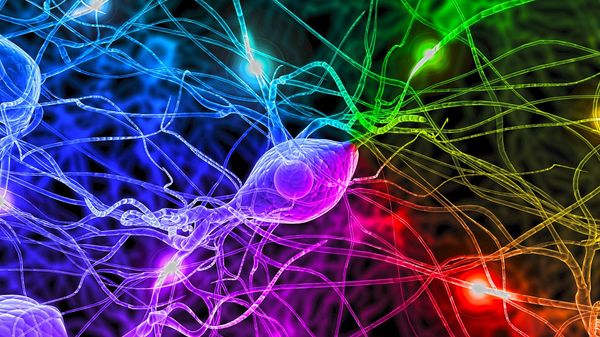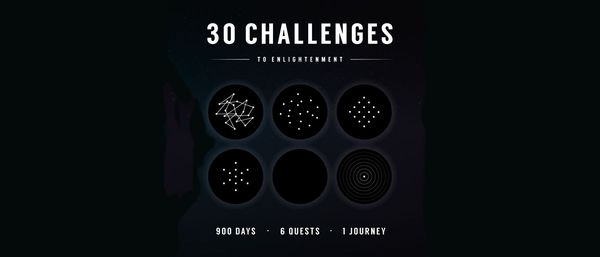Justin Noppé • • 5 min read
Everything You Know About Speed Reading is Wrong

We’ve all seen the ads, “The average CEO reads 52 books a year!”, “Speed reading can increase your ability to earn!”.
Or at least something to those effects.
This sounds great at first glance, “Why yes! I do want to read more, and reading faster would make that easier, and I want to earn more too!”
However, with a little deeper look, we find the truth.
And it’s a truth that plays on our current education system’s downfalls.
I joke with people who repeat the statistics of CEO’s who read that much, “Show me a CEO who reads that much and I’ll show you a company that deserves a more present CEO!”.
The Mechanics of ‘Speed’ Reading
Techniques like fixation points, using pointers, pacing your page rate, eliminating subvocalization — these are all bragged as being the pathway to reading well over 500 words per minute.
A cursory view of these mechanics seems legit.
The famous YouTuber, Thomas Frank, as well as author and blogger, Scott Young, go into detail with disproving these mechanics, so if this is interesting for you, I highly recommend them.
However, without looking into these mechanics, we need to acknowledge the biggest issue with these famous speed reading courses that boast amazing claims: the volume of information that your eye can process is VASTLY different from the volume of information that the brain can process.
Simply put, your eyes have to deal with so many pieces of information each day that it is a pro at it!
Working memory (the part of the brain that holds and connects information together) is the limiting factor here. It can only handle 2-4 pieces of information at a time. It is the bottleneck and the place to focus our efforts.
A great metric here to use as a way to see what your reading speed is, is ReadingCope.
Rather than the vanity metric of words-per-minute (WPM), a typical measurement of speed, we can see our comprehensible words-per-minute (CWPM) rate. And therein lies the issue.
If we are more familiar with a topic, a style or a level, our comprehension speed is naturally faster.
When reading a six-year-old’s book compared to a college textbook, want to guess which book you’ll have a higher CWPM for?
How about a college textbook on a topic you are familiar with and a college textbook on a topic you are clueless about?
Speeds will change based on your brain’s comprehension.
Another issue usually brought up by many is focus. Can’t focus enough to read for an hour?
That is an easier fix than you think.
Focus comes from an emotional connection.
Think about it like movies you have loved or movies you have loathed! If you love it, usually there is no issue of focus. Tired or not, emotions will connect because it is enjoyable. Whereas, even if you start an uninteresting movie with energy, it can leave you snoring in the theatre within minutes.
This element is highly personal. Practice getting pumped about reading books!
Unfortunately, our current education system globally lacks instruction on how to continue with your learning.
Once you are literate, reading speed is assumed to develop naturally and behind the scenes. There is nothing that will see you unlocking your maximum potential.
The average college-educated reader reads at 200-400 WPM. But what about someone who only finished high school? Hell, what about someone who wants more?
Enhancing reading speed sounds good, but enhancing comprehension is better.
The way of enhancing both requires knowledge of how the brain works together, what stimulates the brain and what is needed to create an automatic skill. None of which is inherent in the education system at large.
I guarantee that any reference to connecting emotionally to your reading is coming from passionate teachers and not institutions (if you had one, count yourself blessed).
So how can you authentically level up? It’s actually easier than you may think.
A Change of Approach
1 — Emotional Anchoring
Make sure you love the topic and really want to learn more. You’ll find yourself devouring book after book easily because it lights you up and feeds a part of you.
Our keys here are inspiration, curiosity, and interest.
2 — Genre Reading
Reading the same ‘type’ of text (research papers, company reports, BuzzFeed articles, non-fiction books, etc.) will give you more proficiency in it. You’ll get more automatic without too much effort.
Also, reading more variety of genres will help you adapt faster to new text types.
3 — Multiple Readings
I always recommend skimming through a book first as a ‘qualifying’ read. Making a ‘yay or nay’ judgement based on a skim is a good way to vet books before dedicating hours to them and not get any benefits from them.
For skimming, I dedicate an hour or so to go through the contents page, each chapter, the prologue and appendices, tables, chapter summaries, etc.
Multiple readings also have another benefit. Choose one page each hour and choose to reread this page three times.
The first will be for comprehension and emotional response. In the second pass, you will start to notice finer details about the ideas that you may have glanced over the first time.
By the final read, you will notice the sentence grammar they used to communicate their points, what words they chose to use to do the same, and how they connected it all together.
You will move from responding to the ideas to then looking at their prose.
4 — Social Activation for Retention
Want to keep more of what you get from a book?
Make some notes and discuss them with friends that enjoy the discussion.
Simply put, your reformulation and examination of the points will engrave them in your brain.
Over time, you will notice that you become fantastic at predicting the endings of sentences, where the critical information is in a sentence, what structures support main ideas, what concepts are important to the topic, and so on.
Once people reach about 400 CWPM, I advise them to become an advocate of slow reading.
If you truly want to absorb a book/ text/ poem, take your time with it.
Imagine it like food. Don’t just wolf it down. Slowly consume each paragraph, stopping to reflect on how it tastes. Your brain digests better slower. Eat your fill each sitting and don’t overeat. Once your brain is full, stop reading.
And most of all, enjoy it.
Is it better to read 100 books with 1% comprehension of each, or 1 book with 100% comprehension?
There is No Next Book Without Application of Knowledge
It doesn’t matter if you are discussing the depths of a character’s motivation from a work of fiction, or a technique from a textbook: go forth and give it life!
Now that you have the knowledge of some techniques, what good is it to consume knowledge without application of the knowledge, the personal reflection that follows, and then the social exchange where you compare your findings with others.
Apply this principle to this article, put this knowledge to good use.
And similarly, do the same with any text you read.
We all know someone who has read the book we want to, and when we ask, they may remember what it said, but they never applied any of the wisdom within.
Books, poetry, articles, research papers, it doesn’t matter — don’t pride yourself on a vanity metric that is cool to tell people.
Pride yourself on the process of reading, developing the skill for speed or slow reading, and sharing the content to enrich the lives of people you love.










